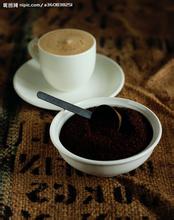Espresso step-manual espresso practice
Espresso step-manual espresso practice
Work begins: first remove the brewing handle from the coffee maker. (need to pay attention to two things: first, always buckle the hand on the brewing head to keep warm, do not put it on the warm cup or plate or other places, otherwise the low temperature handle when brewing coffee will lower the temperature of the brewing water and cause the coffee to go sour. Second, the coffee grounds inside should not be deducted before brewing the next cup of coffee, because the copper cooking head at high temperature will produce a peculiar smell, and the coffee grounds can absorb the smell.) Buckle the hand to the brewing head, press the brewing key to wash the handle and the brewing head, and shake the handle constantly in order to rinse the coffee residue glued to the brewing head. (note: if you load the powder directly without rinsing the head, the residue glued to the head will be extracted again, causing the coffee to become bitter and astringent. In addition, this is also equivalent to releasing water in the front section to prevent the boiling water from being too hot, resulting in excessive extraction.)
Blending and baking
It is impossible to make a good Espresso without a good coffee mix. Coffee must be matched with the sweetness, aroma and lubrication required by Espresso. Coffee beans must be fresh, generally use coffee beans 4-7 days after roasting, which is conducive to the release of excess carbon dioxide from roasted beans, and coffee beans should be freshly ground to maintain freshness. At the same time, the deeply baked beans will taste bitter and scorched, while the Italian concentrated beans will be lightly baked to bring out the sweetness they need.
How to make espresso?
Bean grinder and bean mill
The process of grinding beans should be meticulous, and the thickness of the powder can keep the absorption process between 25-30 seconds. The bean grinder should be selected properly, and the cone shape is better. Cone-shaped grinding plates are more average and have a longer life than flat ones, and coffee is not heated during grinding. If the grinding plate is heated, the coffee will lose its flavor.
Distribution and pressing powder
In the filter handle, before pressing the powder, the coffee powder must be evenly distributed in the filter of the handle. First use 5 pounds of pressure powder once, then press once with 30 pounds of pressure, and then rotate 720 °with 20 pounds of pressure to make the powder surface smooth and smooth.
How to make espresso?
four
Water temperature and water pressure
The temperature of the water and the stability of the water temperature are very important, and the water temperature must be stable at 92-96 °C. The water pressure passing through the Espresso should be between 9 and 10 atmospheric pressure. This pressure is guaranteed to produce foam.
five
Absorb time
The absorption time for brewing two 1-ounce cups of Espresso should be between 25 and 30 seconds. In addition to time, if the color of the Espresso starts to fade, you should end the production process. The goal should be to produce a dark red Espresso within 25-30 seconds without changing color.

Important Notice :
前街咖啡 FrontStreet Coffee has moved to new addredd:
FrontStreet Coffee Address: 315,Donghua East Road,GuangZhou
Tel:020 38364473
- Prev

The difference between small seed, medium seed and large seed of coffee how does the brand brew flavor describe the taste
Coffee small seed, medium seed, large seed of the difference between brands how to brew flavor description taste, also known as Liberian species, for evergreen trees. The plant is tall, more than 10 meters high, the branches are thick and hard, grow obliquely upward, and the branches cork the fastest. The leaf blade is oval or round, the leathery leaf surface is glossy, the leaf end is closed, and the leaf margin is not corrugated. The fruit is large, oblong, hard and thick in skin and pulp, and navel.
- Next

Coffee filter paper folding-how to fold coffee filter paper by hand
Coffee filter paper folding-how to fold coffee filter paper how to use ● coffee powder per person is about 10 ~ 12 grams and boiled water is 120 cc. ● people who like light coffee can brew it with a powder amount of about eight grams per person. ● likes bitterness, the amount of flour can be 12 grams per person, fully steamed and then slowly injected with boiling water. The kettle used for hot water injection in ● is about seven minutes.
Related
- What brand of black coffee is the most authentic and delicious? what are the characteristics of the flavor of the authentic Rose Summer Black Coffee?
- Introduction to the principle and characteristics of the correct use of mocha pot A detailed course of mocha pot brewing coffee is described in five steps.
- Which is better, decaf or regular coffee? how is decaf made?
- How much is a bag of four cat coffee?
- How about four Cat Coffee or Nestle Coffee? why is it a cheap scam?
- Which is better, Yunnan four Cats Coffee or Nestle Coffee? How about cat coffee? is it a fake scam? why is it so cheap?
- How about Cat Coffee? what grade is a hoax? which instant coffee tastes better, four Cat Coffee, Nestle Coffee or G7 coffee?
- Process flow chart of coffee making-Starbucks coffee making process what coffee tastes good at Starbucks
- The top ten best coffee beans in the world Rose summer coffee or Tanzanian coffee tastes good
- Yunnan four cat coffee is good to drink?_four cat coffee is a big brand? four cat blue mountain coffee is fake?

